

Copyright Paul Elvstrm and Bloomsbury Publishing Plc 2013. All rights reserved. Except as permitted under the United States Copyright Act of 1976, no part of this publication may be reproduced or distributed in any form or by any means, or stored in a database or retrieval system, without the prior written permission of the publisher.
ISBN: 978-0-07-181074-6
MHID: 0-07-181074-9
The material in this eBook also appears in the print version of this title: ISBN: 978-0-07-181073-9, MHID: 0-07-181073-0.
All trademarks are trademarks of their respective owners. Rather than put a trademark symbol after every occurrence of a trademarked name, we use names in an editorial fashion only, and to the benefit of the trademark owner, with no intention of infringement of the trademark. Where such designations appear in this book, they have been printed with initial caps.
McGraw-Hill eBooks are available at special quantity discounts to use as premiums and sales promotions, or for use in corporate training programs. To contact a representative please e-mail us at bulksales@mcgraw-hill.com.
Note: While all reasonable care has been taken in the preparation of this publication, the author and publisher accept no responsibility for any errors or omissions or consequences ensuing upon the use of the methods, information or products described in the book.
TERMS OF USE
This is a copyrighted work and The McGraw-Hill Education. (McGraw-Hill Education) and its licensors reserve all rights in and to the work. Use of this work is subject to these terms. Except as permitted under the Copyright Act of 1976 and the right to store and retrieve one copy of the work, you may not decompile, disassemble, reverse engineer, reproduce, modify, create derivative works based upon, transmit, distribute, disseminate, sell, publish or sublicense the work or any part of it without McGraw-Hills prior consent. You may use the work for your own noncommercial and personal use; any other use of the work is strictly prohibited. Your right to use the work may be terminated if you fail to comply with these terms.
THE WORK IS PROVIDED AS IS. McGRAW-HILL AND ITS LICENSORS MAKE NO GUARANTEES OR WARRANTIES AS TO THE ACCURACY, ADEQUACY OR COMPLETENESS OF OR RESULTS TO BE OBTAINED FROM USING THE WORK, INCLUDING ANY INFORMATION THAT CAN BE ACCESSED THROUGH THE WORK VIA HYPERLINK OR OTHERWISE, AND EXPRESSLY DISCLAIM ANY WARRANTY, EXPRESS OR IMPLIED, INCLUDING BUT NOT LIMITED TO IMPLIED WARRANTIES OF MERCHANTABILITY OR FITNESS FOR A PARTICULAR PURPOSE. McGraw-Hill and its licensors do not warrant or guarantee that the functions contained in the work will meet your requirements or that its operation will be uninterrupted or error free. Neither McGraw-Hill nor its licensors shall be liable to you or anyone else for any inaccuracy, error or omission, regardless of cause, in the work or for any damages resulting therefrom. McGraw-Hill has no responsibility for the content of any information accessed through the work. Under no circumstances shall McGraw-Hill and/or its licensors be liable for any indirect, incidental, special, punitive, consequential or similar damages that result from the use of or inability to use the work, even if any of them has been advised of the possibility of such damages. This limitation of liability shall apply to any claim or cause whatsoever whether such claim or cause arises in contract, tort or otherwise.
CONTENTS
ISAF RACING RULES SECTION
(Grey headband)
EXPLANATORY SECTION
(Red headband)
ISAF INTERPRETATIONS SECTION
(Red hatched headband)
Race Signals Flags
Rules are cross-referenced to the Explanations and Interpretations byREDnumbers in the margins
FAST FIND DIAGRAM TO PART 2 RULES WHEN BOATS MEET
Black numbers are the Rule numbers
Red numbers refer to the Explanatory Section page numbers
Basic Rules that apply all over the course
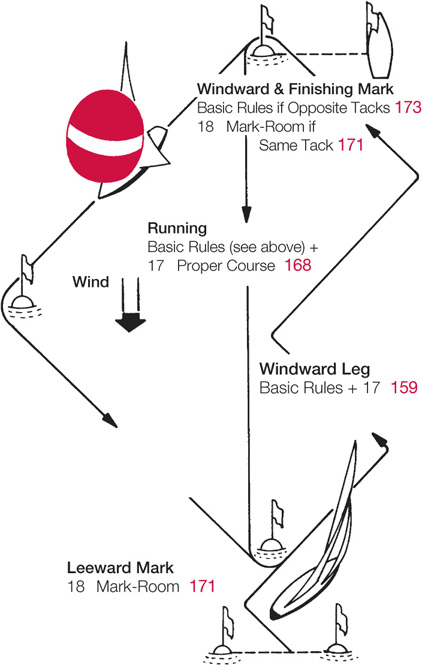
Gybe Mark
Reach
Leeward Mark
Prestart, Start & Starting Marks
Basic Rules (see above)
Not Section C Rules 18, 19 and 20 at a Starting Mark when approaching to start
Not 17! Same Tack, Proper Course before the Starting Signal
Race signal flags Back cover
FOREWORD
Every four years after the Olympic Games, the Racing Rules of Sailing are reviewed. Despite constant efforts from the ISAF Racing Rules Committee to keep the Rules simple and easy to read, they are still quite difficult to understand and may be ambiguous in some situations. To help to clarify them and ensure uniform interpretation and understanding of their meaning, the ISAF publishes a number of official interpretations or Cases.
Paul Elvstrm Explains the Racing Rules of Sailing provides a ready-reference to the Rules, explanatory notes and drawings, and reference to relevant ISAF interpretations in a handy pocket-sized book. Its aim is to help officials and competitors alike to learn the Rules easily, to understand them, and to apply them correctly. It also enables protests and disputes to be resolved fairly.
Paul Elvstrm Explains the Racing Rules of Sailing is therefore an invaluable handbook, providing a concise guide to the racing rules for everyone involved in the sport.
Gran Petersson, President of ISAF
Former Chairman of the Racing Rules Committee
INTRODUCTION
The main object of Paul Elvstrm explains the Racing Rules of Sailing is to provide a handy and easily-read guide for all of us to understand and interpret the rules identically.
The Racing Rules are probably among the most complicated of any sport. They are hard to comprehend even if a great effort is made, when writing the Rules, to use language which is modern and easily read. There is also a constant flow of new interpretations, clarifications and changes to the Rules. Also, the use of the same Rules in match racing and the introduction of on the water judging in fleet races have introduced a more aggressive use of the Rules as a weapon against competitors. The best way to avoid problems is still to sail against others in the same way that you wish to be sailed against. This unwritten rule is the best way of preserving friendships and promoting the desire to participate in sailboat racing.
It is great to win in sailboat racing, but only if the other competitors join in the pleasure.
I am happy that Sren, besides being an active sailor and a busy judge/umpire, has again found the time to edit this edition which incorporates the new 20132016 Rules and ISAF Cases up to 2011.
Paul Elvstrm
HOW TO GET THE BEST USE OUT OF THIS BOOK
The book is divided into three sections.
 The Racing Rules of Sailing as published by ISAF.
The Racing Rules of Sailing as published by ISAF.
 A simple Explanation of the various situations that can arise under each rule, supported by birds-eye-view line drawings.
A simple Explanation of the various situations that can arise under each rule, supported by birds-eye-view line drawings.
Next page


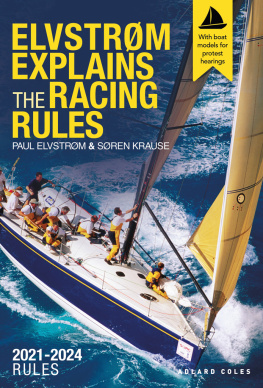
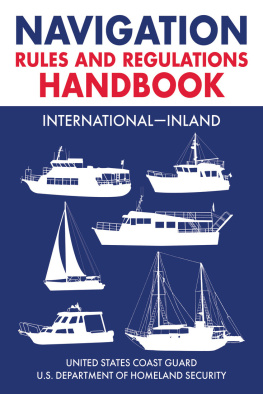


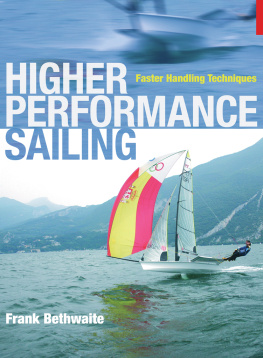
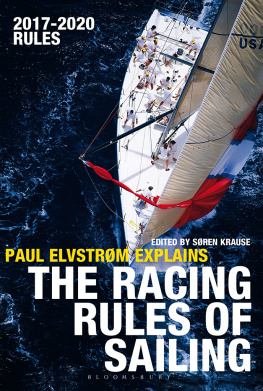
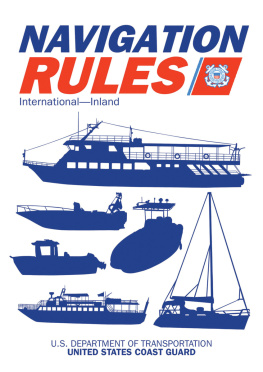




 The Racing Rules of Sailing as published by ISAF.
The Racing Rules of Sailing as published by ISAF. A simple Explanation of the various situations that can arise under each rule, supported by birds-eye-view line drawings.
A simple Explanation of the various situations that can arise under each rule, supported by birds-eye-view line drawings.